
Title: Crime Scene Investigation and Management
Plenary Speaker
Prof. Anthony Schembri
Former Police Commissioner in New York, United States
Abstract
This will be a presentation of real crime scenes and the management of efforts bringing together the forensic experts and the investigative personal to solve real cases. Having lead the Homicide Department department unlike CSI and other programs, police fail to collect and properly analysis a crime scene which I will demonstrate. We need to interpret crime scenes. Sloppy police investigations, lazy forensic personnel team up to reduce the ability to solve cases with solid evidence.
Biography
Anthony Schembri is a respected law enforcement and academic professional with over four decades’ experience in the field. Over the years, he has drawn praise from such varied sources as New York City Mayor, President Jimmy Carter, Florida Governor Jeb Bush, and New York Governor Mario Cuomo. First appointed to the Brooklyn District Attorneys Office he advanced to Deputy Chief of the Narcotics Bureau, then to Director of Training at the District Attorneys Police Academy. Anthony Schembri has served as the city’s Deputy Inspector General, investigating cases of major crime and corruption. He was appointed by the Mayor of New York as Corrections Commissioner, a position putting him in charge of 12,000 uniformed officers and 20,000 inmates at 19 separate jail facilities. Today, the Citrus County, Florida, resident serves as a Visiting Professor at Oxford and Sheffield Hallam University and named Outstanding Professor of the Year at the University of Florida.

Title: Handwriting Analysis of Petru Mircea
Speaker
Zaida Melissa Guajardo
Criminal Profiler,Forensic handwriting Analyst,Body Language expertise,Graphologist ,Graphologist,Graphotehrapyst,Art Therapist.
Abstract
The case of Madalina Manole, a famous European Singer, of Romanian Nationality, who lost her life in a dramatic way and who to this day is full of doubts.
In this case, the Handwriting of the husband of the deceased pop star that time Petru Mircea will be analyzed.
Biography
Zaida Melissa Guajardo Master in Criminal Profi ler, Body Language Analyst, Handwriting Analyst, and Graphoscopy Bachelor in Criminal Justice Major in Forensic Investigations, National University College.

Title: The CSIs of Childhood Trauma: Understanding Forensic Social Work and Mitigating Circumstances
Speaker
Dr. Marian Swindell
Mitigation Specialist, Certified Forensic Interviewer/Criminal Defense Council, Professor
Abstract
Crime scene investigation shows, especially in the United States, portray a workplace filled with young, sexy, energetic investigators all working together in a fast-paced, productive work environment. These programs are incredibly effective in attracting students into criminology courses and certificate programs. Sexy, glamorous phrases such as "DNA, fiber, and latent fingerprint analysis, descending parabolic trajectory calculations, document analyses, toxicology, three-dimensional laser scanning, topography and surface metrology, secondary ballistics phenomena, and forensic odontology, entomology, anthropology are captivating the public's attention and changing the landscape of forensic investigation. Unfortunately, the not-so-sexy phrases of "mitigating circumstances, child rape, child abuse, neglect, maltreatment, poverty, homelessness, starvation, child trafficking, and incest" are not getting that same worldwide attention. Students are not enrolling in family violence classes, forensic social work courses, or family and child welfare classes near the rate of students in criminology courses.
This presentation aims to take a step back. To step back before the blood splatter expert is needed. Before the ballistics expert and the medical examiner are needed. Exploring and learning the reasons and "excuses" behind intentional/malicious murder is the purpose of this presentation. How exactly does one end up on death row? What life events and circumstances are so horrific or so traumatizing that they force someone to murder? Why do some children who have been physically, mentally, and sexually abused for years end up "normal" while others grow up and kill people? The effects of adverse childhood events on brain architecture and development and mental illness are discussed in this presentation.
Biography
Dr. Swindell is a professor of Social Work at Mississippi State University and recently made history as the first teaching Ph.D. and MSW in Social Work to be awarded tenure and achieve the rank of professor. Swindell also independently contracts as a mitigation expert and expert witness, working with men serving capital murder sentences on death row in the US. She has over 30 years of experience in forensic social work and brings a wealth of information from sociology, social work, and forensic testimony evidence retrieval to this conference. Dr. Swindell completed her Ph.D. (2001) and MSW (1992) in Social Work from the University of Alabama.
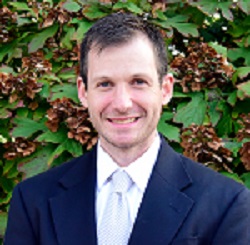
Title: The Intersection of Forensic DNA Processing and Bloodstain Pattern Analysis
Keynote Speaker
Prof. Erik C Hall
Saint Louis University United States
Abstract
Bloodstain pattern analysis (BPA) has long been used as a tool for detectives and investigators in attempting to determine what happened at the crime scene. BPA has more recently been called into question for its scientific validity and subjective interpretations. During this talk we will review some of the principles of BPA which lead to its foundation in the scientific domain as well as update the audience on current terminology and techniques used in documentation and processing of bloodstain scenes. Special attention will be given to the importance of follow-up DNA testing on samples located at a scene involving bloodstain pattern analysis. Discussion will be held on the ability of DNA analysts and in turn bloodstain pattern analysts to conclusively say the DNA came from the blood at the crime scene. Case studies will be presented to highlight the importance of proper collection and DNA processing of the samples seized from different blood scenes. After the talk, participants will be able to confidently use current terminology, understand the importance of stain selection for DNA processing, and feel more confident in the methodology used in interpreting bloodstain patterns at crime scenes.
Biography
Erik Hall is the Director of the Forensic Science Program at Saint Louis University in St Louis, Missouri. Mr. Hall was the former Biology Technical Leader and a DNA analyst at the St Louis Metropolitan Police Department Crime Laboratory. At the crime laboratory, Mr. Hall was the head of the DNA crime scene response team which was tasked with aiding detectives in investigating major crime scenes using bloodstain pattern analysis and advanced DNA techniques to gain insight into the crimes. Mr. Hall has expanded his passion for forensic science as the founder and principal consultant of Hall Forensic Consulting, which specializes in assisting law enforcement, crime laboratories, and attorneys in areas such as DNA analysis, crime scene investigation, and bloodstain pattern analysis. Mr. Hall has a Master’s degree in Forensic Ccience from the University of New Haven and a Bachelor’s degree in Biochemistry from Messiah University.

Title: Audism and Language Deprivation: A Call for the Incorporation of Deaf Epistemes in New or Existing Criminology Theories
Keynote Speaker
Dr. Aviva Twersky Glasner
Corresponding author Katrina Miller, Ed.D. Co-author
Abstract
Criminology is an interdisciplinary branch of sociology that applies biological, sociocultural, and psychological lenses to the social problem of crime and its causes. At this time, there are no criminological theories specific to the deaf and hard of hearing (deaf) population. There have been historical attempts to apply human development and psychological theories toward deaf individuals who have demonstrated antisocial or criminal behaviors. Psychologists who focus on lifespan development generally hypothesize that nature and nurture are simultaneously influential in shaping human development. As a construct, Deaf identity was the subject of research by Glickman & Carey (1993). Glickman devised the first identity scale for deaf and hard of hearing individuals that attempted to measure the extent of self-identification with the Deaf Culture experienced by an individual. This presentation is about the authors’ attempt to devise an identity scale, based upon Glickman’s and Carey’s work but focusing on the nascent Deaf Critical theories; emerging in the past ten years, and to validate the proposed scale on a random sample of Deaf adults, eventually on Deaf adults in the prison system.
Biography
Dr. Aviva Twersky Glasner, Ph.D. received a Master’s in Forensic Psychology and her doctors degree in Criminal Justice. She has worked with Deaf individuals and developed her research interests around using criminological theories to examine the role that socialization may play in criminality of Deaf inmates.
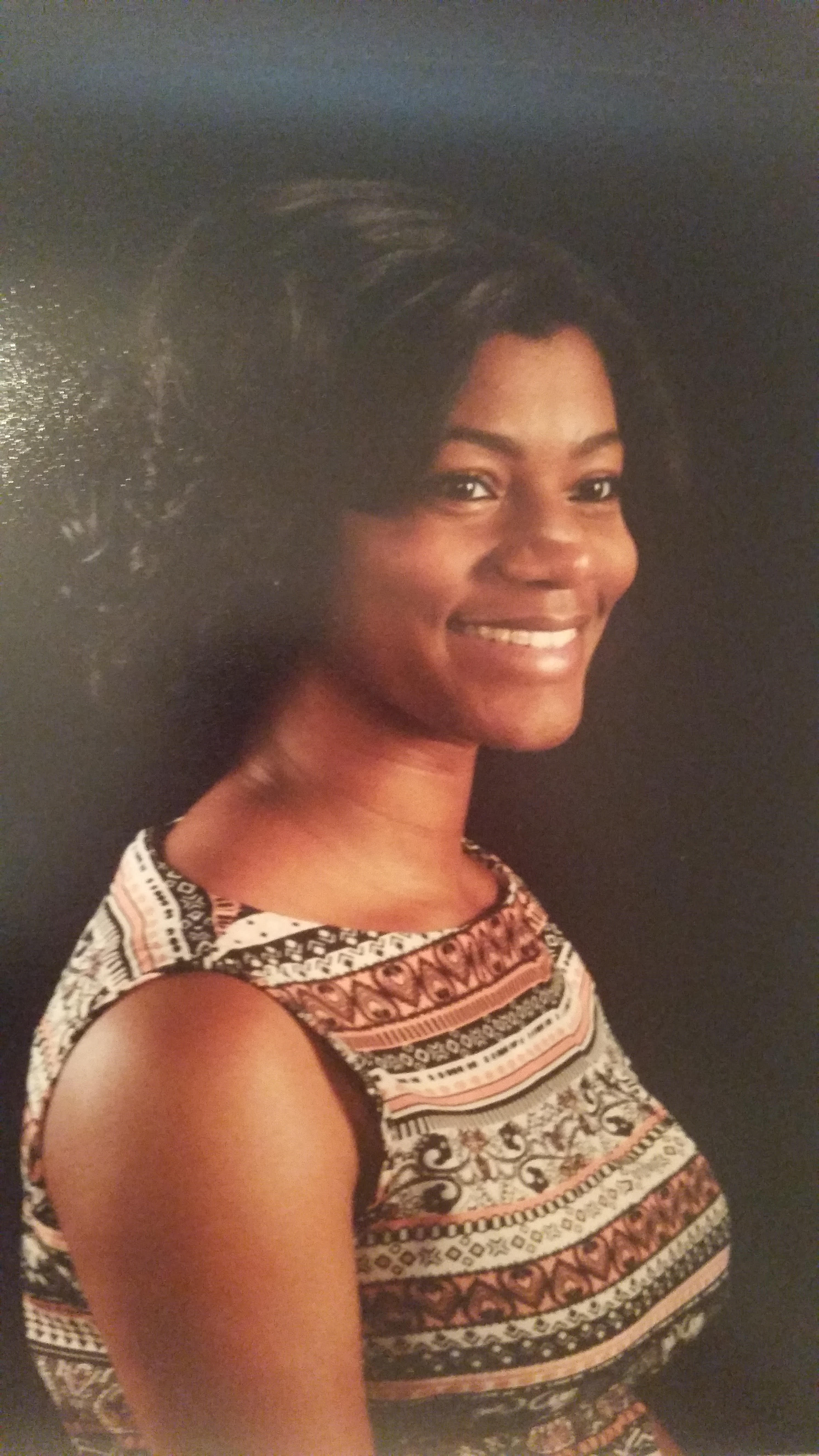
Title: Deaths Due to Electrocution: An Evaluation of Death Scene Investigations and Autopsy Findings
Oral Presentation
Dr. Brittani K Smith
Oklahoma State University, United States
Abstract
The purpose of the study was to delineate the epidemiological characteristics of electrocution deaths in Maryland, identify any potential risks, and address preventive measures. A retrospective review of all the deaths due to electrocution was conducted at the Office of the Chief Medical Examiner in the State of Maryland from 2005 to 2015. During the 11-year period, a total of 55 electrocution deaths were identified from the autopsy cases at the statewide medical examiner system. More males died of electrocution than females with its ratio of (M: F) = 9:1. Of the 55 cases, 67.3% were White, 18.2% were African-American, 12.7% were Hispanic, and 1.8% were other races. The age of the victims ranged from 4 to 83 years with mean age of 40 years. >96% deaths due to accidents and 3.4% were suicide. The majority of deaths (70.9%) were caused by high-voltage circuits. Approximately 64% of fatalities were work-related accidents. The study indicated that electrocution deaths frequently affected young male workers who were in contact with a high-voltage currents while on the job. The detailed death scene investigation and autopsy findings are presented. The potential hazards of electricity must continue to be addressed in public safety campaigns to prevent such deaths. Strategies should ensure safe work environments for any contact with electric currents.
Biography
BrittaniSmith has completed her Bachelor of Science degree in Biology from Claflin University in 2016. She has also completed her Master of Science degree in Forensic Medicine from the University of Maryland, Baltimore in 2017. She recently completed her Doctor of Forensic Science degree from the Oklahoma State University. Dr. Smith has previously worked as an instructor of Anatomy and Physiology for two colleges and prior has experience performing forensic autopsies at the Office of the Chief Medical Examiner in Baltimore, Maryland. Her research on electrocution has been presented at the International Conference of Evidence Law and Forensic Science (ICELFS) and has been published in the Journal of Forensic Science and Medicine. She is also a member of the International Association for Identification.
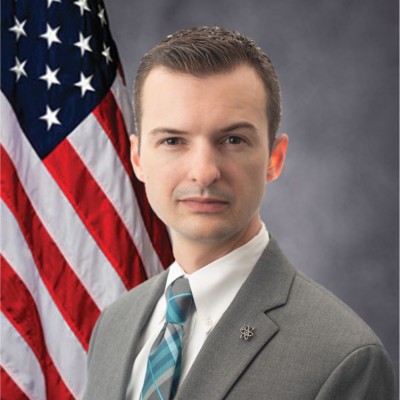
Title: Space Forensics and The Future of Crime Scene Reconstruction
Speaker
Zack Kowalske
Forensic Detective | PhD Researcher | Author
Abstract
What does the future hold for the bloodstain pattern analysis and crime scene reconstruction
disciplines? The researchers of the 19th century could not have foreseen the incorporation of
today’s technology into BPA. And in the same notion, what technologies are in the forensic age
of tomorrow that are currently simply ideas? Venture into the future and postulate new
technologies and the incorporation of current tech into the evolution of BPA. In addition, this
presentation will discuss the results of recent novel bloodstain pattern analysis research
conducted in microgravity conditions. The study aimed to understand the behavior of bloodstains
in zero-gravity environments and to consider challenges for analyzing bloodstains in space. The
research involved creating simulated microgravity conditions and observing the formation and
behavior of bloodstains under these conditions. The results of the study are expected to provide
valuable insights into the behavior of bloodstains in microgravity and will have implications for
forensic investigations in space.
Biography
Zack Kowalske currently serves as a Crime Scene Detective with the Roswell Police Department (GA) in the United States. Having served in law enforcement since 2009, the majority of his career has been within the Crime Scene Investigations Unit. Mr. Kowalske holds a Masters of Science with a Concentration in Forensic Science. Currently, he is a PhD researcher through Staffordshire University where he is pursuing a Doctorate in Forensic Science with his research focusing in the discipline of bloodstain pattern analysis. He is a graduate of the National Forensic Academy, where he was awarded the Dr. William Bass Award for Outstanding Achievement in the Field of Forensic Investigations. Det. Kowalske is a member of the OSAC Subcommittee on Bloodstain Pattern Analysis and on the Board of Directors for the Association of Crime Scene Reconstruction.

Title: The need for operationalizing situational crime prevention using forensic science to disrupt the organized crime business profiteering landscape
Keynote Speaker
Prof. John Coxhead
Loughborough University United Kingdom
Abstract
In last year’s conference, forensic capacity and capability was critiqued because its central practice was essentially identified as the retrospective investigation of crime; an inheritance from the late nineteenth century. The reason for the critique was that the continued growth of entrepreneurial Organised Crime Businesses (OCBs) have too few prevention and disruption inhibitors: in other words, it is too easy to make, and benefit from, criminal profit. Hence an argument for a new strategic paradigm shift towards proactive forensic disruption, particularly in reducing, or removing, financial anonymity. The proactivity referred to concerns essentially reframing the current financial ecosystem in order to make it far more hostile and less appealing to criminal enterprise profit exploitation. Financial and asset profit in this context refers not just to fraud (financial crime) offences but all and any crime types that generate any subsequent criminal profit: the context here is thus about the financial rewards and proceeds of crime, rather than just ‘financial crime’. Felson and Cohen (1980) and Clarke (1997) have previously articulated the applied principles of situational crime prevention (SCP), whilst Rashid, et al, (2022) have appliedsuch principles to financial crime prevention more specifically. SCP advocates three core principles, that of increasing the perceived difficulty of crime; increasing the risks; and reducing the rewards. Clarke (Ibid.) identified twenty-five operational techniques to operationalize these principles, that made it harder, riskier and less rewarding for would-be criminals. Crime profit is unknown but hasbeen estimated to be at least $870 billion (equivalent to 1.5% of global GDP) (United Nations Office on Drugs and Crime, 2009). The United Nations (UN), in turn, via its transnational organized threat assessments, propose four core pillars to tackle Serious and Organised Crime (SOC) profiteering namely better international integrated coordination; more consumer awareness raising; better equipped intelligence capability; and enhanced capacity building for States to resist OCB operations and infrastructure. The gap between the strategic intention for SCP for OCB profit is that forensic science capacity and capability has not fully harnessed all of its capacities and capabilities to support such a strategic intention in a global, synergised way. The gap requires more international contemporary co-operation across the Bank for International Settlements, an ethical trading challenge to the anonymity of crypto currencies and a form of global forensic science task force and agreed manual of proactive tactics and operating model to seriously apply SCP concepts to the OCB profit marketplace.
Biography
Dr John Coxhead is a pracademic having served as a police professional for over 30 years whilst also being engaged in academic research. He has held Professorships at Keele University and Loughborough University, and is currently Professor and Director of the International PIEL Centre, at the University of East London, which collaborates with researchers in the USA, Canada, Australia, India and the West Indies. He has researched and published both overt and covert materials across a wide range of industrial high impact topics, particularly serious and organised crime. He has worked for several years in police academic collaborations, to bring academic research closer to operational policing application.
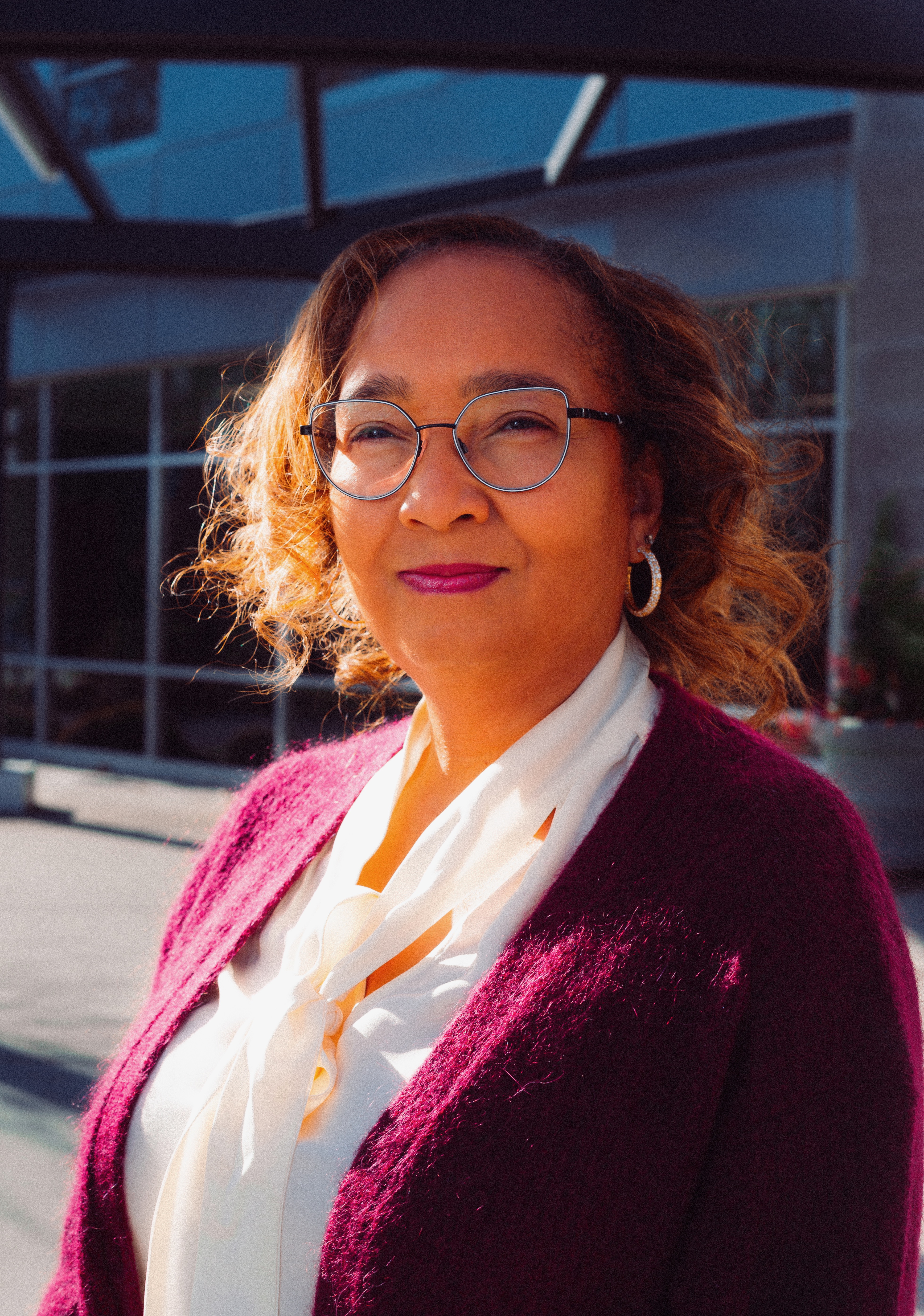
Title: PERCEPTIONS OF UNIVERSITY LAW ENFORCEMENT OFFICIALS’ REGARDING UNSUBMITTED, UNTESTED SEXUAL ASSAULT KITS (SAKS)
Speaker
Dr. Darlene Brothers-Gray
Author, Coordinator, Assistant Professor
Abstract
The purpose of the qualitative research study was to examine the perceptions of university law enforcement officials on unsubmitted and untested sexual assault kits (SAKs). Sexual assault nurse examiners use SAKs to collect evidence from sexual assault victims and pass them to law enforcement officials; however, many SAKS remain unsubmitted and untested once in police custody. Without such evidence, law enforcement officials cannot apprehend perpetrators of sexual assault. Sexual assault is a problem worldwide, including on university campuses where there are higher rates of sexual assault than in the general population. The generic qualitative inquiry study was the means of exploring why many officials do not test SAKs in police custody and to assess the perceptions of 10 university police officers in 2 Middle Atlantic university police departments regarding unsubmitted and untested SAKs. Semi structured interviews, conducted in person, digitally recorded, and transcribed, elicited the experiences of the law enforcement officers. Following the interviews, thematic analysis (i.e., inductive analysis) was the approach used to analyze the data, from which 4 thematic categories emerged: (a) finances, (b) resources, (c) manpower, and (d) reoccurrence. The research shows that the provision of resources, finances, and manpower is necessary to reduce single and reoccurring sexual assault crimes and to promote the proper functions of the criminal justice system, collective engagement of members of society, and equal value of its citizens, regardless of gender. The study indicated the need for stakeholders to collectively engage, acknowledge the systemic gaps, and provide resolution so that officials properly utilize SAKs to apprehend offenders and empower victims to live healthy and functional lives.
Biography
Darlene Brothers-Gray, recently received a book offer on her research on untested sexual assault kits title “The Phenomenon of Untested Sexual Assault Kits” published by Cambridge Scholars Publishing. https://www.cambridgescholars.com/product/978-1-5275-7330-7. Dr. Brothers-Gray earned her PhD in Criminal Justice from Capella University in 2020, an MS in Forensic DNA and Serology from the University of Florida, and an MS in Forensic Investigations from National University. She is currently an Assistant Professor for the undergraduate Forensic Investigation Certificate in the Department of Criminal Justice at Coppin State University.

Title: Examination of Sensitivity of Bloodstain Detection Methods in Heavily Diluted and Altered Samples
Keynote Speaker
Heidi Sievers
Sievers Forensics, Columbia Southern University, Keiser University
Abstract
Bloodstains are a common form of physical and biological evidence searched for on crime scenes. In many instances, this type of evidence is not readily visible or accessible to investigators and forensic personnel. Whether due to environmental conditions or suspect actions, bloodstains are often diluted or altered from their original state at deposition onto a target surface. Two of the most sensitive and more common methods for identifying areas of interest of detection of potentially bloodstained specimens is the use of Human Remains Detection (HRD) canines, trained in trace blood evidence, and a luminol-based formula, such as BlueStar. Studies have explored the applicability and ability of both canines and BlueStar in detection of diluted samples; however, this study specifically looks at the concealment of blood evidnece in scenarios such as a water rinse, soap and water wash, bleach:water ratio, laundered clothing, and concealment with various coats of paint. The applicability of both HRD canines and BlueStar Forensic was examined. Both the reactions of the canines and chemiluminescent reaction of BlueStar was documented with photography and videography. Variances in ability for detection as well as intensity were observed in both scenarios providing insight as to which method proves to be more influential in assisting with locating a source of potential blood on a crime scene or individual pieces of evidence.
Biography
Heidi Sievers holds a PhD in Criminal Justice and a Master’s Degree in Forensics. She is a former forenisc investigator and human remains detection canine handler. She is an International Association for Identification (IAI) Certified Bloodstain Pattern Analyst (CBPA). She owns Sievers Forensics which speciaizes in forensic and bloodstain pattern consultation, private investigations, and forensic training. She is a professor at the undergraduate and graduate levels for forensics, crime scene technology, and criminal justice.

Title: ANALYSIS OF FORENSIC SAMPLES BY INVESTIGATOR ESSPLEX QS (QIAGEN)
Plenary Speaker
Dr. ANNA BARBARO
President, Worldwide Association of Women Forensic Experts (WAWFE), Italy
Abstract
The Investigator ESSplex SE QS Kit (Qiagen) is a PCR kit for forensic, human identity and paternity testing that simultaneously amplify 17 STRs, including the 5 European Standard Set (ESS) markers, the SE33 locus and the gender-specific marker Amelogenin.
In the present study we verified the performance of the Investigator ESSplex QS in standard condition and using half reaction volume for the amplification of some control samples from known donors and real forensic samples and established the optimal concentration range.
Biography
Anna Barbaro has completed her European PhD in Forensic Genetics (PhD) at University of Santiago de Compostela (Spain). She got a Diploma at the School of Specialization in Applied Genetics and a Master Diploma in Psychological and Behavioral Techniques of the Criminal Investigation at the University of Rome La Sapienza (Italy). She has published more than 150 papers, including conference presentation, she is Author of 5 technical Manuals and of some chapters in other books. She serves as President of the Worldwide Association of Women Forensic Experts, she is honor member of some scientific associations, she serves as reviewer for several international scientific journals and she is Member of the Editorial Committee of some international scientific journals. Invited speaker at various national and international conferences, organizer of courses and conferences about Forensic Sciences, member of the Scientific Committee of several courses and conferences. She is currently researcher at the University of Alcalà (Spain).
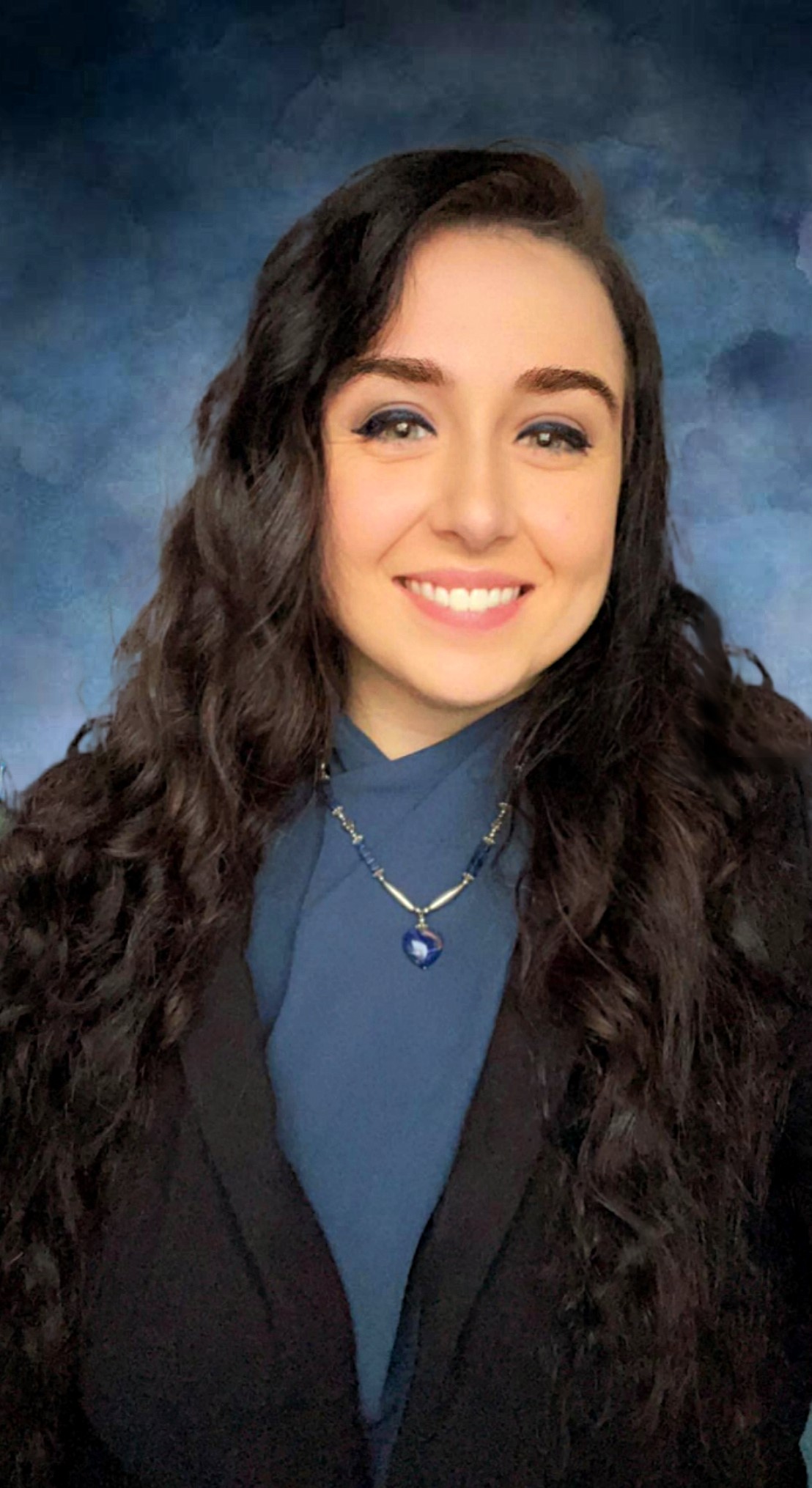
Title: Forensic Anthropologist and Archaeologist, Looking for New Opportunities in Medicolegal Death Investigation
Speaker
Hannah E. Matulek
Forensic Anthropologist and Archaeologist
Abstract
Osteoarthritis (OA) is a collective term for multiple progressive, degenerative diseases of the joints. OA is thought to be influenced by a complex combination of factors including genetics, age, sex, ancestry, lifestyle, activity levels, and repetitive activities. It is among the most common pathologies observed in skeletal remains, yet there is a paucity of research detailing the application of OA to age-at-death estimations. The pathological discovery of OA is often denoted as an incidental finding or a minor, non-specific aspect of an age estimation, suggesting the individual is “probably older than 40”. This research correlates an individual's known age-at-death with the presence or absence of OA in various joints. Based on the results of this preliminary study, a new non-metric aging method was created. The author argues that, like any estimation methodology, the proposed method could serve as another tool in the forensic toolbox and that it could have significant implications for remains that are incomplete, fragmentary, burned, or taphonomically altered. This presentation will describe the creation of this method, its application to aging unidentified remains, and future implications of this research.
Biography
Miss Hannah E. Matulek is a forensic anthropologist and archaeologist. She received her Master of Science in Forensic and Biological Anthropology from Mercyhurst University in Erie, Pennsylvania, USA. She also received her Honors Bachelor of Arts in Archaeology, minoring in Geology, from the College of Wooster in Wooster, Ohio, USA. She has worked nearly 30 nearly active forensic cases and has used forensic archaeology to search for and recover 15 decedents from a variety of outdoor contexts. She has also utilized geophysical survey instruments to assess the presence and location of unmarked graves in a historic cemetery for formerly enslaved peoples, a project which is currently under review for the National Register of Historic Places of the Underground Railroad. Her research interests include forensic age estimation, ancestry, establishing identity of the deceased, humanitarian forensics, and remote sensing of graves.
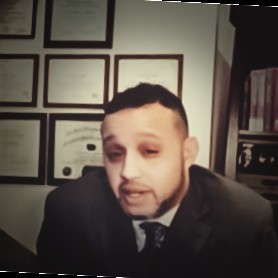
Title: Unimpeachable Expert Reports
Speaker
Mr. C. Zachary Meyers
Certified Public Accountant& Certified Valuation Analyst retained in over 2,600 cases as a testifying, consulting, or court appointed forensic accounting, valuation, & taxation expert.
Abstract
This course expands upon the concept of Unimpeachable Neutrality and will focus on forensic accounting evidence, the federal rules of evidence, and evidence in the form of expert reports, and expert rebuttal reports. The commentary will provide real life examples of rebuttal techniques commonly used by hired gun expert witnesses, and discusses how to quell the no good, naysaying, disingenuous opposing hired gun expert witness. Course participants will gain knowledge with regards to preparing expert report that are appropriate for the engagement, its purpose, its findings, and the needs of the decision-makers who receive and rely upon it.
Biography
C. Zachary Meyers, CPA, CVA has been retained in over 2,600 matters, providing litigation support and expertise to Courts and legal professionals as a testifying, consulting, and/or court appointed expert. C. Zachary Meyers has testified and been qualified as an expert in Forensic Accounting, Business Valuation, Pension Valuation, and Taxation Expert in Federal and state courts specific to Civil, Marital, and Criminal Litigation. Mr. Meyers has made significant contributions to define the disciplines of accounting and valuation through his work leading or advising standard setting bodies and valuation professional organizations with regards to promulgating professional standards and standards related guidance.

Title: Quantification And Purity Assessment of Trace DNA Extracted from Latex Hand Gloves
Speaker
Samuels Eleojo John
Forensics DNA Analyst | Forensic Science | CSI | Research | Forensic Capacity Building
Abstract
Worn premeditated personal protective equipment, PPE which include hand gloves decreases the chances of cross-examination due to an almost total absence of recoverable DNA from crime scenes as the PPE ensured that only negligible contact could be made between perpetrator and the scene. Nonetheless, the used PPE could be disposed of within a considerable radius around the scene and a design to identify and analytically represent this evidence before a judicial system is required. This study aimed to assess a cost-effective method of recovering trace DNA from the inner surface of used latex hand gloves during different durations of time, using double swabbing and substrate cutting methods to obtain sufficient STRs for PCR amplification and Forensic typing. The effect of double swabbing and substrate cutting methods were analyzed at fingertip, whole inner surface and entire palm regions. Our findings showed that the qualitative and quantitative analysis of trace DNA is significant around the whole inner sections, 26.23ul, and the fingertip regions, 18.16ul, which are both suitable profiles for STR comparison. Higher success rate was observed when double swabbing method, at a totaled 0.53ul, was applied and the purity of the DNA samples analyzed all produced ≥1.70. Double swabbing method had higher success rate at the whole inner sections and the fingertips regions of the hand glove. Time differences were negligible. These findings could aid forensic scientists in analyzing trace DNA from crime scenes involving PPE in developing countries, as the study highlights a sustainable technique of trace DNA recovery in the pursuit of justice, hence relevant to the global forensic science community.
Biography
Samuels Eleojo John is appraised with a certificate in Forensic Science from King’s College London, and a Postgraduate Degree in Forensic Biotechnology (DNA analysis) from the Department of Biochemistry, under ACENTDFB, Ahmadu Bello University, Zaria, Nigeria with experience in general forensics science from academics, trainings, seminars, and conferences. He is a forensic analyst at Sentinel Forensics Limited during which he has supported in crime scene investigation and developed the forensic investigative capacities of multiple branches of Nigeria military, and law enforcement agencies in the use of forensic intelligence through streamlined and intense manpower trainings, infrastructural development, and forensic advisory to promote the safety of the public with regards to the rule of law.
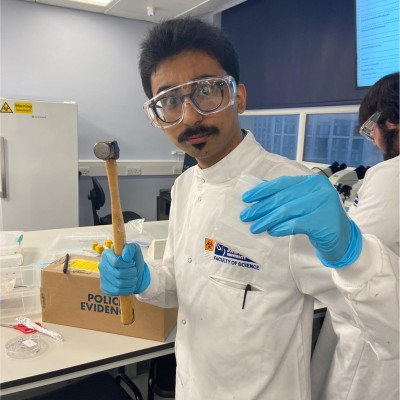
Title: Investigation of the Similarities of Fingerprints within Families
Speaker
Danish Ali Jaffery
Student at Liverpool John Moores University
Abstract
Fingerprints are small patterns found on the surface of the fingers which are made up of perforated ridges which provide them with their structure and pattern and the aim of this research paper is to provide evidence supporting the view that fingerprints have similarities within family members and are hereditary. This will be achieved using a range of different studies which have been carried out on this topic by other reputable scientist and researchers and the data produced from these studies will be implemented into this paper to help us understand if fingerprints are indeed hereditary. The answer to that question is yes, fingerprints are hereditary as it has been found that the offspring share key structures such as ridge endings with their parents, but the sizes and measurements of such structures are different and unique to that individual.
Furthermore, it has been concluded that there is a higher level of genetic influence from the parents on the fingerprint pattern and structure than other factors such as for example, the environment as the genetic information passed from the parents shows a larger level of significance however environment factors have seen to be able to change a person’s fingerprints as a person may get a scar on their finger which in turn changes their fingerprint pattern to an extent.
Biography
Danish Ali Jaffery is currently completing his bachelor’s degree in Forensic Science at Liverpool John Moores University, United Kingdom. He has completed several Advanced Levels which include Biology, Psychology and Computer Science and he is actively looking to sharpen his skills with any opportunity presented to him.
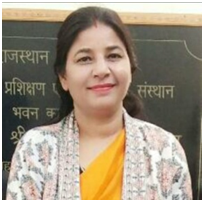
Title: PARTIAL HANGING: A BIG QUESTION TO DECIDE SUICIDE OR HOMICIDE: PSYCHOLOGY BEHIND CASES
Keynote Speaker
Dr. Rakhi Khanna
Additional Director& Head, RFSL
Abstract
Partial Hanging cases are still a big challenge to clear about mode of death from suicide or homicide. One such case was visited on information of death of sixteen year old girl student at mortuary, where on medical part the decision was not confirming but confusing about suicide and homicide. At crime scene also the body of girl was found hanged in partial condition. Relatives of the girl cut open the knots of ligature and took her to the hospital. Hence there were many evidences which were intermixed with the incident. Even some evidences were taken by the police. In such situation at crime scene there were statements of having relationship between the girls and the tutor as well as parents also knew these information. Hence we couldn’t set apart theory of Honor killing too, but we have mis-lead crime scene as well as interrupted evidences. In such situation we need to reconstruct the available evidences. On observation of deceased, multiple ligature marks were prominent circular, regular and nail scratching were visible on neck, the hands were having tied marks all indicates the possibility of strangulation. There were many questions about sexual assault or rape before it. The mat was lying there in the room had hairs of the same quality as that of the deceased girl. The reconstruction of crime is important on part where the criminal performs brutal act whether on bed or on mat. Looking to various symptoms the case has some aspect towards suicidal hanging too. The examination of this case is of upmost significance to the medical officers, field crime investigators and all parents to learn from various aspect of this planned heinous murder of an innocent girl. Various links associated with the case were studied and evidences were collected and sent for FSL for DNA, Biological, Cyber and Toxicological examination. On the basis of crime scene investigation, prompt police alertness, FSL examination the culprit was caught and scientific evidences made concrete results for conviction for either death penalty or life imprisonment of the culprit in the court. It was a very sensational case which can be stated as end point case between suicidal hanging and homicidal strangulation as time between assault and hanging/ strangulation is very little. The verbal statement of the criminal opens every-ones eye about its thought and mode of planning to murder and refrain. The impact of bolly-wood movies on the younger generations also gives fear to the society. This case is very important to aware the society and parents about the security of girl child and changing perception of true love towards selfish dominance.
- The psychological impact of bolly-wood movies on the generations also gives fear to the society.
- This case is very important to aware the society and parents about the security of girl child before sending for any personal tutors.
- It was a case of highest brutal criminality about mental and sexual perception of crushed love results in extreme selfish dominance
This sort of psychological one way love gives a great fear as well as lesson to society.
Biography
Additional Director, Expert Toxicology & Training Forensic Scientist, Regional Forensic Science Lab, Kota Rajasthan, India × Biography Dr. Rakhi Khanna is presently the Deputy Director Training at State Forensic Science Laboratory, Jaipur, Rajasthan, India. As Head of Toxicology section, Analyzed more than 10 thousand cases. Manage Analysis and Reporting of Poisoning cases, Produce Reports in time, Give evidence in court, Adoption of new innovative techniques of analysis according to specific cases. Performed Research work in many cases. President of Internal Complaint committee of Prevention, Prohibition and Redressal Act against sexual harassment of women at workplace, 2013. Has wide experience of analytical and administrative work as DDO, Building construction of new building, Development of new Laboratory and Toxicology Division at Ajmer, Attend conferences, sending papers in conferences, taking invited lectures. Working experience of 22 years as Forensic Scientist cum Toxicologist from 1998 and have experience of analyses of large number of cases. approx. 20,000 cases and 60000 exhibits are reported.
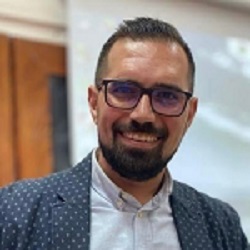
Title: Profiling Methods Applied in Crime Scene Investigation Study Case
Keynote Speaker
Mr. Andrei Ceobanu
Ştefan cel Mare University of Suceava, Romania
Abstract
Criminology is an interdisciplinary field in both the behavioral and social sciences, including research by sociologists, psychologists, philosophers, psychiatrists, biologists, social anthropologists and law specialists. In the mid-18th century, criminology emerged as a result of social philosophers’ studies of crime and legal concepts. Profiling is the process by which the personality characteristics of the murderer are indicated, taking into account the analysis of the crime scene, the various types of existing personalities, the statistical data of similar acts as well as the nature of the mental dysfunctions demonstrated by the murderer at the time of committing the act. A commonly used definition belongs to Vernon Geberth who stated that psychological profiling is an elevated attempt to provide investigators with specific information about an unknown author of a given crime, a process based on careful crime scene investigation, victimology and known psychology theories. The connection between criminology and forensics is well-known and has a great tradition of continuity over time. Although crime scene research is a technical activity based on scientific principles of chemistry, physics and other exact sciences, an interpretation of crime scene based on psychological principles can make a difference in terms of legal framing of the crime, the measures must be taken as well the specialists to be involved. This case study refers to a crime committed in 2017 in a provincial town, which stunned public opinion and created great difficulties for the police even before reporting it and accessing the crime scene. The difference was made by the profiling activity done by forensics based on the evidence identified at the scene.
Biography
Andrei Ceobanu graduated Romanian Police Academy, Bucharest, in 2010. Ever since he works as forensic specialist, crime scene investigator and fingerprints expert. He developed local forensic laboratory and manage the activity from 2017. In 2020 started teaching forensic classes as professor assistant at Faculty of Law from Stefan cel Mare University, Suceava, Romania.
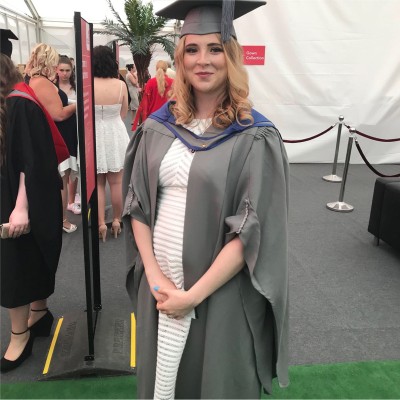
Title: Adapting Forensic Teaching for the virtual world
Speaker
Mrs.Katie-Jane Hobbs
Forensic Science Specialist
Abstract
Teaching forensic science as a discipline can be extremely challenging as it requires a lot of in-depth knowledge and technical know how as well as consistency and practical skills that ensure scientific knowledge and impartial working throughout to ensure the evidential processes are followed stringently to ensure continuity of evidence for court. This involves lots of practical experience including mock crime scenes and various different practical areas such as forensic biology (DNA Analysis) and Forensic Chemistry (Drugs Analysis). During the 2020 pandemic it became apparent that teaching face to face would need to be adapted. This webinar looks at the different ways teaching can be adapted to ensure learners still get the same experience without compromising the learning. We look at virtual reality software, virtual classroom learning and software. The comparison of these techniques to current practice is completed and a conclusion drawn from this.
Biography
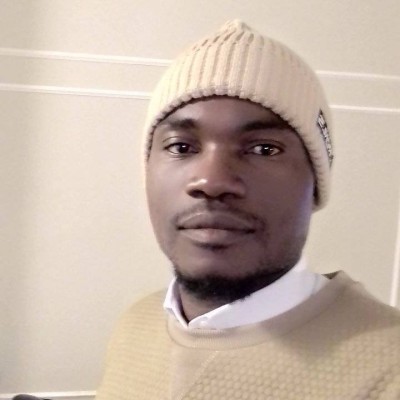
Title: Forensic Drug Intelligence Dynamics
Speaker
Mr. Donald Mushove
Head Forensic Chemistry at CID Forensic Lab (Forensic Biologist + Forensic Chemist ): Fellow (International Association of Coroners and Medical Examiners, NV, USA)Forensic investigations Lecturer
Abstract
Head Forensic Chemistry at CID Forensic Lab (Forensic Biologist + Forensic Chemist ): Fellow (International Association of Coroners and Medical Examiners, NV, USA)Forensic investigations Lecturer
Biography
Donald Mushove is a Forensic Expert and Detective who is qualified in Forensic biology and Forensic chemistry. Currently he is the Acting Superintendent Responsible for Forensic Science in the Zimbabwe Republic Police (ZRP). Donald is the Former Head of Forensic Biology, Head Forensic chemistry and former Officer in Charge Forensic Science. He is a Forensic Investigations Lecturer with the Chartered Institute of Risk and Security Management, ZRP Police Academy and ZRP Police Staff College. Donald is also a teaching assistant in forensic Genetics for Second years at the University of Zimbabwe. He is also a trainer with the Criminal Investigations Department, responsible for training Detectives.
+91 9491 456 452
Door No.200, Immidhihalli Main Road, Whitefield-560066, Bangalore, India
About Us
Global Scientific Guild organizes conferences and webinars to promote quality research and real world impact in an atmosphere of true international co-operation between scientists, doctors, professors, practitioners, engineers and industry by bringing together the world class renowned personalities to discuss the latest developments and innovations at one common platform.